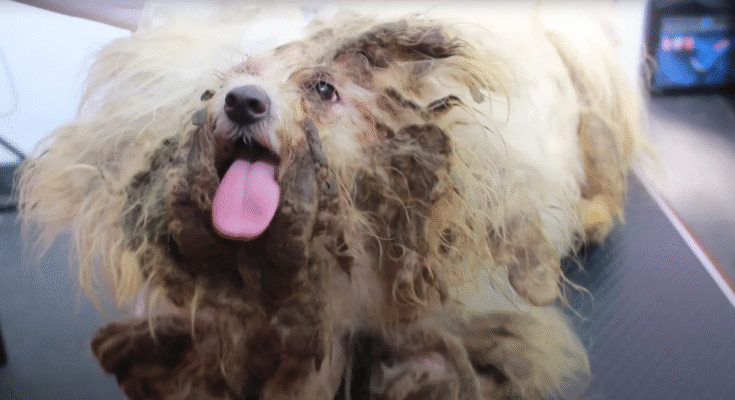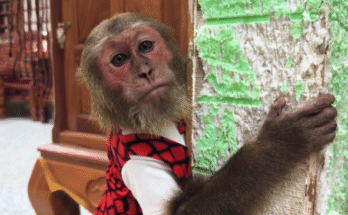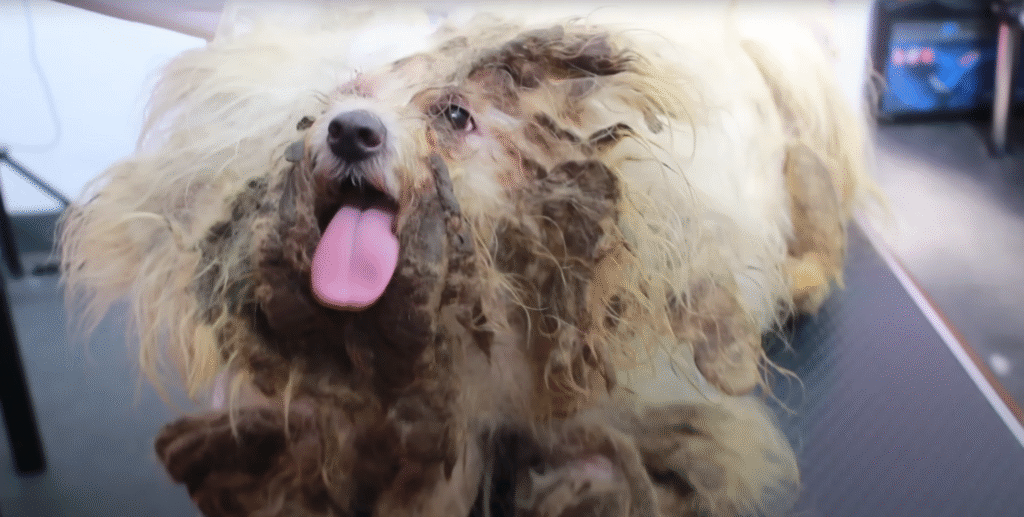
The moment I first saw him, I knew his life had been anything but easy. His fur was matted and dirty, clinging to his thin frame like a ragged coat that had been long forgotten. The smell of neglect hung around him, a pungent reminder of months, maybe years, without care. His eyes, though, told a different story — they were weary but not broken, cautious but still curious. There was a glimmer of trust hidden beneath layers of fear. And in that glimmer, I found my purpose that day: to rescue him.
I had been volunteering at the animal shelter for several years, encountering dogs of all shapes, sizes, and backgrounds. But there was something different about this one — a quiet resilience that made my heart ache and my determination harden. The shelter staff explained his history in somber tones. He had been found tied to a post in a backyard, abandoned by an owner who had long since given up on him. Neighbors had reported that he had gone days without water or proper food, and no one had intervened until he was nearly too weak to stand.
When I approached his cage, he recoiled at first, curling into the farthest corner, low growl rumbling in his throat. Fear was his armor, and it had been forged over too many months of mistreatment. But I didn’t flinch. I knelt at his level and spoke softly, letting my voice carry calm rather than command. I extended my hand, palm up, offering not food or punishment, but a silent promise: I would not hurt him.
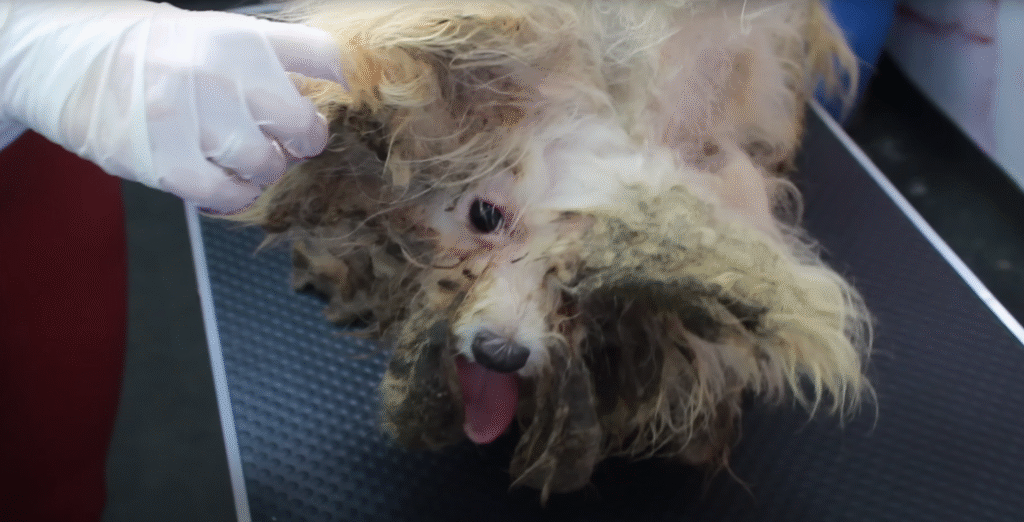
It took a long moment before he stepped closer. Tiny, tentative steps, paw after paw, testing me as though measuring my intentions. When his nose finally touched my hand, I felt a shiver of connection, fragile but powerful. It was the beginning of a fragile trust that would take days, weeks, and months to fully build.
The shelter staff had prepared a small, quiet room for his recovery, away from the bustling noise of other animals and volunteers. He walked hesitantly into the space, every movement measured and wary. I followed, carrying a blanket and a small bowl of water. The sight of him bending low to lap at the water with careful, deliberate sips broke something in my heart. How long had it been since he had felt safe enough to drink without fear?
Over the first few days, our interactions were small and cautious. I would sit on the floor for hours, letting him observe me, letting him choose when and how to approach. Sometimes he would come near, sometimes he would retreat, always keeping one eye on me, one eye on the door. I talked to him softly, naming him “Hope,” a small gesture that felt almost ironic at first, but soon began to feel prophetic. Hope, despite everything, was still there in the room, alive and waiting.
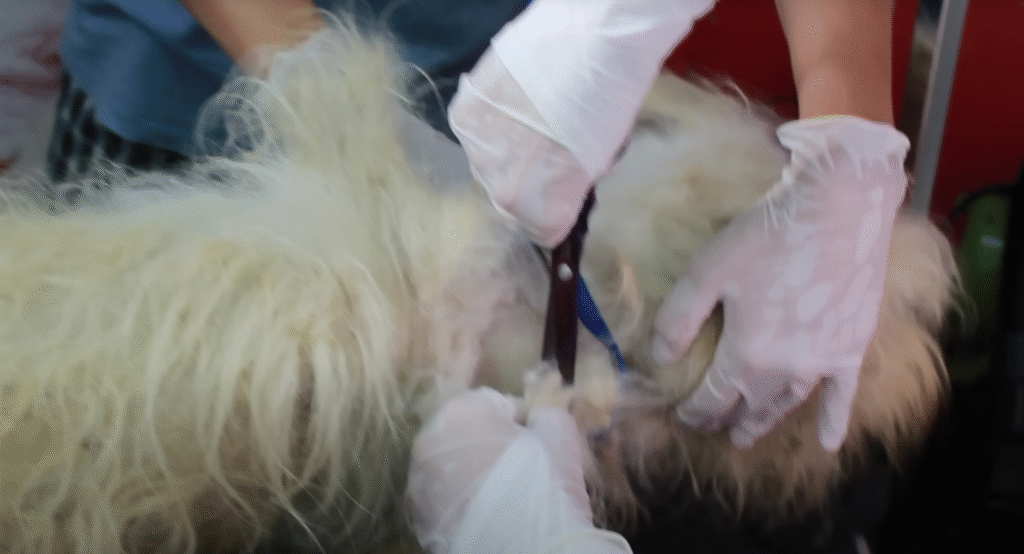
Feeding him was a delicate process. His body had been weakened by malnutrition, so we had to start with tiny portions, gradually building up his strength. Each meal became a small victory, each bite a step toward reclaiming life. When he first wagged his tail — a small, hesitant wag — I nearly cried. The simple motion was a signal that he was beginning to feel safe, that the walls built by fear and neglect were starting to crumble.
As the weeks passed, Hope began to transform. His fur, once matted and dull, grew shinier and smoother under careful grooming. His body gained weight and muscle, but it was the change in his eyes that was most remarkable. They softened, lost their permanent edge of suspicion, and reflected something new: trust. He began to seek affection, leaning into gentle pets and even curling beside me during quiet moments.
The transformation, however, was not only physical. There was a subtle, emotional shift that occurred as Hope realized he could exist in the world without constant fear. He learned to play with toys, to chase a ball with unbridled joy, to bark not out of aggression or terror, but from sheer excitement. His first romp in the shelter yard was unforgettable. He bounded through the grass, ears flopping, tongue lolling, every ounce of his body exhaling years of tension in pure motion. Volunteers and staff watched in awe, cheering softly, understanding that they were witnessing a miracle of trust and resilience.
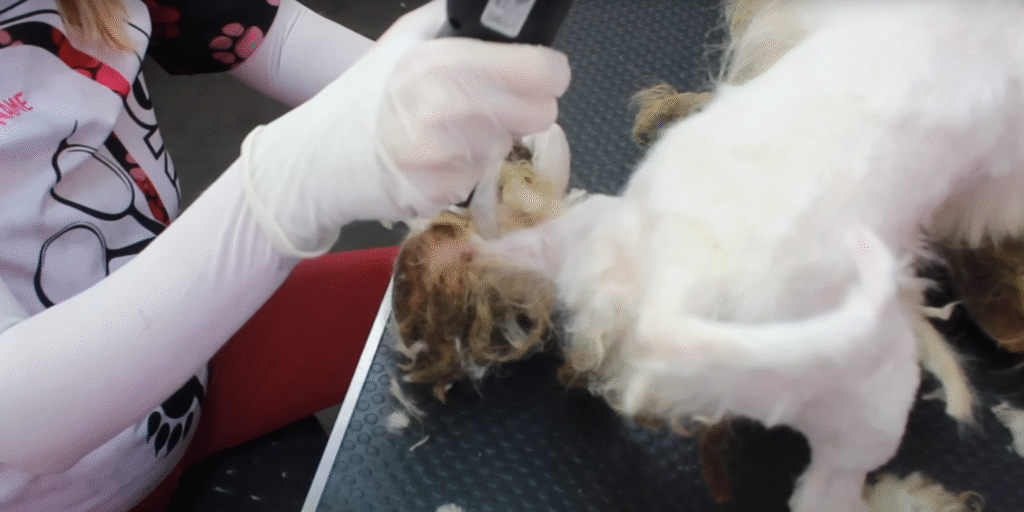
One day, a family visited the shelter, looking for a companion. They had children, a loving home, and the patience to offer a second chance. When Hope approached them, he did so with cautious optimism. The children knelt, offering gentle hands, and he sniffed, paused, and then allowed himself to be petted. It was a pivotal moment — the bridge between shelter life and a real home, between survival and thriving.
The adoption process was bittersweet for me. I had grown attached, nurtured Hope’s fragile trust, and watched him bloom into a confident, joyful dog. But I also knew that the ultimate goal of rescue work is to find permanent love and care for animals who have known little of it. Watching him leave with the family, tail wagging, bright eyes shining, I felt a profound mixture of sadness and joy. Hope was leaving my care, but he was stepping into a life he had been denied for so long — a life full of warmth, attention, and unconditional love.
Months later, I received a letter and photos from his new family. He had adapted beautifully, playing in a fenced yard, cuddling on couches, and even learning tricks that made the children laugh. His once-matted fur gleamed in the sunlight, his eyes sparkled with vitality, and the subtle tremor of fear that had once haunted him was gone. The name “Hope” suited him perfectly.
Rescuing Hope was more than an act of saving a dog; it was a lesson in resilience, patience, and the transformative power of love. Neglect can leave deep scars, both visible and hidden, but consistent care and compassion can rebuild lives in ways that seem almost miraculous. Hope’s journey was a testament to the fact that even the most neglected souls can find renewal, given time, attention, and unwavering kindness.
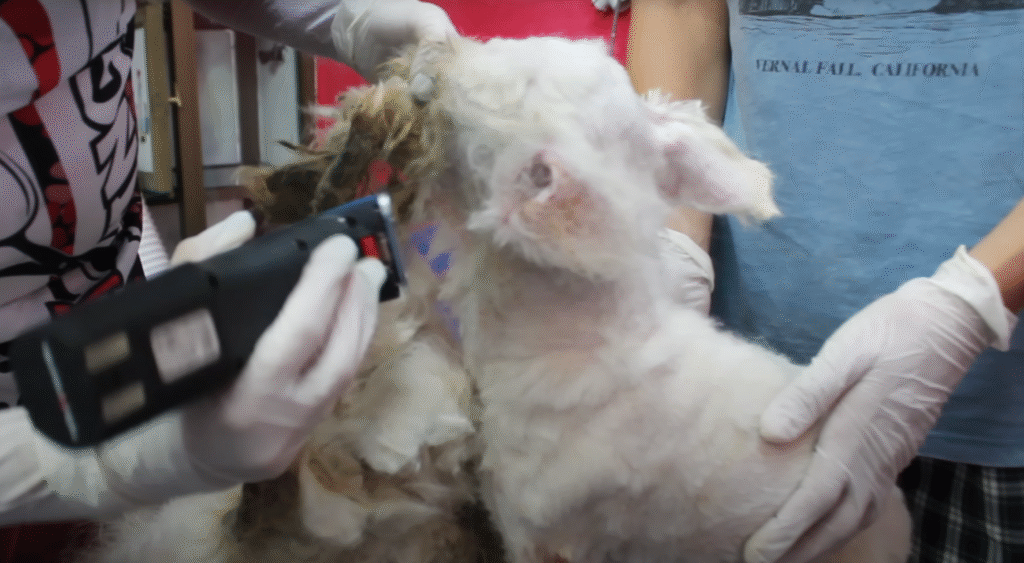
There is something humbling about working with animals who have known suffering. They do not carry grudges, and they do not demand perfection. They only need the chance to heal, to learn that the world can be safe, that love can exist without strings, and that trust can be rebuilt one small step at a time. Hope taught me this, showing that patience, consistency, and genuine care can overcome the deepest scars of neglect.
Every time I visit the shelter now, I think of Hope and the countless other animals waiting for their second chance. His story is a reminder that while neglect can strip away comfort and security, it cannot destroy the fundamental desire to connect, to love, and to thrive. And when that opportunity finally arrives, the transformation is nothing short of extraordinary — a silent, beautiful testament to resilience and the enduring power of hope.
Hope, once a trembling, malnourished dog with fear as his only companion, now lives a life filled with love and joy. And every time I remember the day he kissed my hand in silent gratitude for a few crumbs of food, I am reminded why rescue work matters — because even the smallest acts of compassion can ignite profound change, and even the most neglected lives can bloom when given the chance.
